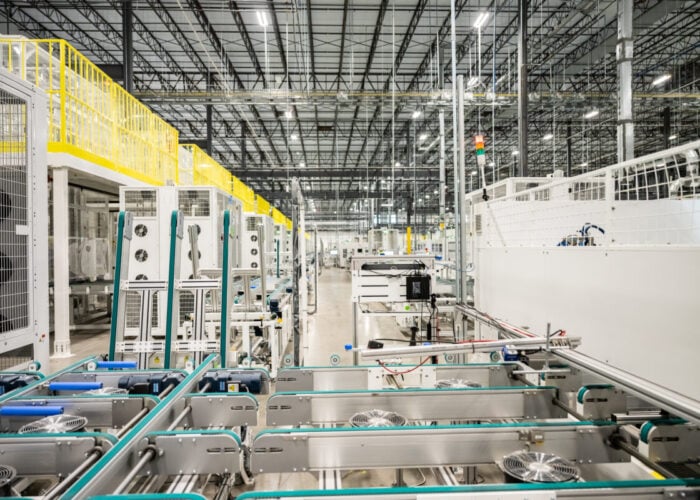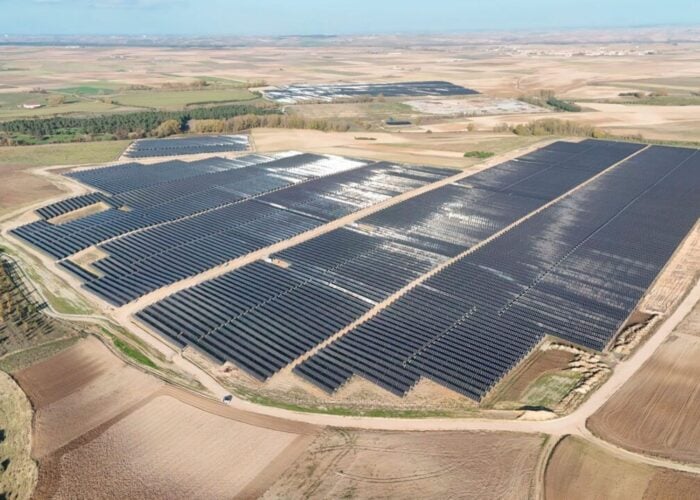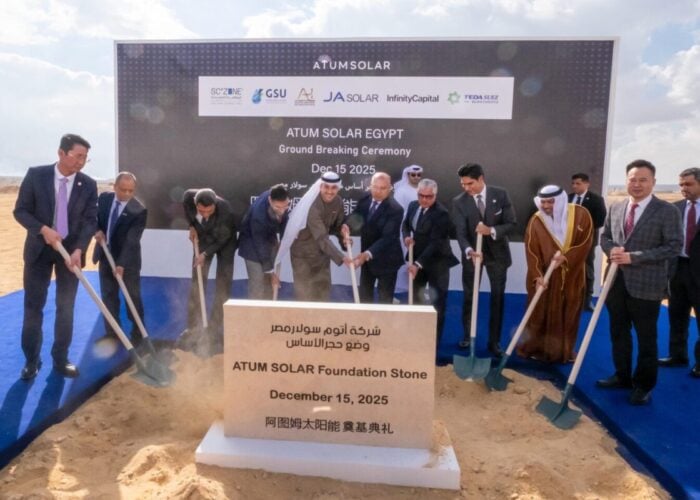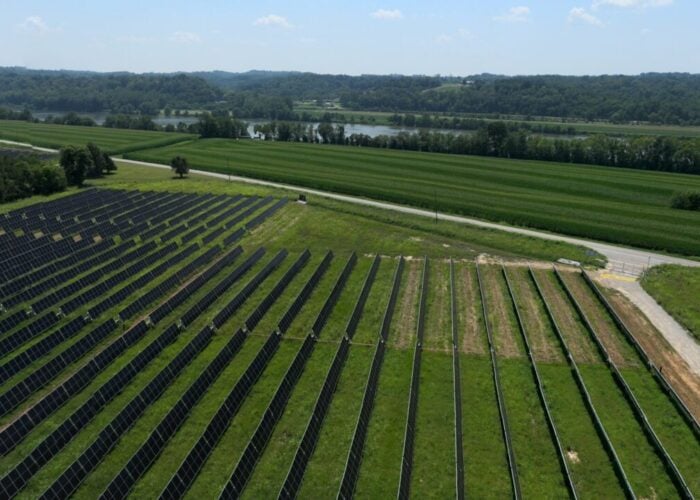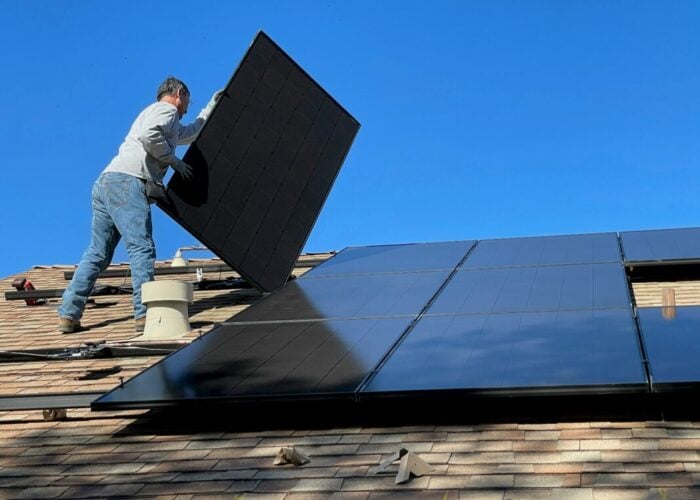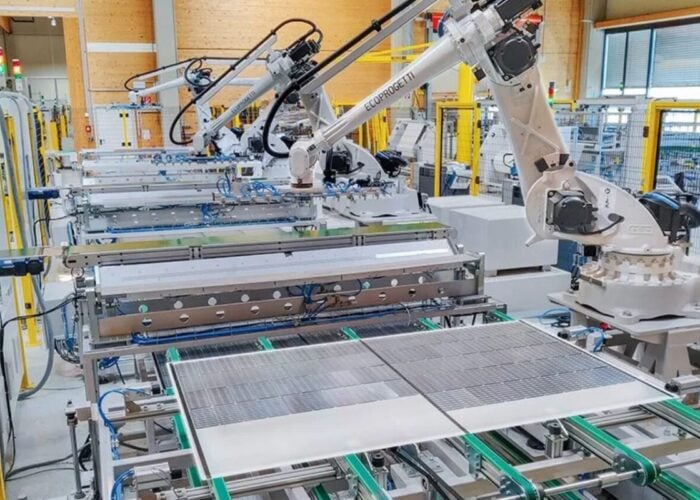Major PV manufacturer Trina Solar is planning to significantly expand solar module manufacturing capacity in 2014, according to documents seen by PV Tech.
The expansion was outlined in investor material provided at the ROTH Capital ‘Solar Symposium’, a parallel investor event held during Solar Power International 2014.
Try Premium for just $1
- Full premium access for the first month at only $1
- Converts to an annual rate after 30 days unless cancelled
- Cancel anytime during the trial period
Premium Benefits
- Expert industry analysis and interviews
- Digital access to PV Tech Power journal
- Exclusive event discounts
Or get the full Premium subscription right away
Or continue reading this article for free
Trina Solar has already been one of the most aggressive in a restrained PV industry capacity expansion phase for 2014, adding 1GW of module capacity to reach 3.8GW. CapEx in 2014 was originally guided to reach between US$230 million to US$250 million in 2014, but in its 2013 annual report, Trina Solar said spending would be up to US$231 million to meet its expansion plans. Trina Solar spent only US$72.1 million on CapEx in 2013, down from US$141.1 million in 2012. Only First Solar had guided higher CapEx in 2014.
Capacity expansion in 2015
Trina Solar has plans to take module capacity in 2015 to a range of between 4.8GW to 5GW, a similar rate of expansion as in 2014. However, wafer capacity is being held at 2014 levels of 1.7GW and solar cell production is only expected to increase 500MW to 3GW.
However, with the majority of capacity additions focused on module assembly, the lowest CapEx spend for the highest capacity increase should result in Trina Solar spending similar amounts next year as in 2014.
Asset lite
One of the key aspects in keeping CapEx low has been Trina Solar’s ‘asset lite’ strategy, partnering along the supply chain in joint ventures (JV’s).
According to the company, manufacturing JV’s added 500MW of module and 420MW of cell capacity for the company in 2014, a trend set to be followed in 2015.
According to the presentation material capacity growth will continue to be disciplined and done in a capital efficient manner.
PV Tech had previously highlighted that Trina Solar had purchased a majority shareholding in Hubei Hongyuan PV Science and Technology, a small solar cell producer as well as taking over operations of tier two module manufacturer, NESL Solartech.
Trina Solar is therefore leveraging the use of OEM, outsourcing and asset leasing to fill its wafering and solar cell capacity gap to modules.
It is well known that Trina Solar relies of GCL-Poly for wafering but the company is expected to leverage Neo Solar Power (NSP) further in 2015 as it limits spending on new in-house solar cell lines.
The company said that it would be up-grading cell lines to higher efficiencies, while working on further operational efficiencies to improve productivity. The company will also be using the likes of the largest merchant cell supplier for the remaining balance of cell requirements.
Overseas expansion
Despite the asset lite approach at home, Trina Solar noted that it was targeting new production capacity outside of China as it plans to further extend its strong market share gains in 2014 to 2015 and beyond.
The company is therefore targeting new production capabilities for the US and European markets, both regions have anti-dumping legislation.
As PV Tech has previously highlighted, meeting market demand in the US does not mean the company would establish production in the country. Mexico has been touted as a key destination for Chinese producers that deem the US a key market to operate in.
Indeed, the US is a key market for Trina Solar, with module sales in the country accounting for 35.4% of total sales in the first half of 2014. Although this figure is set to fall due to higher shipments ahead of the second round of anti-dumping duties imposed on Chinese producers, Trina Solar expects the US to still account for around 17% of sales for the full year.
It should also be noted that Trina Solar has achieved a CAGR of 62.5% since 2007 and cumulative module sales of 8.9GW in the same period to the end of the first half of 2014.
Downstream ambitions intensify
Although Trina Solar’s growth rates have been impressive, PV Tech had highlighted many times that its downstream business ambitions lagged those of near rivals such as Canadian Solar.
However, Trina Solar wanted to catch-up with its rivals and development of its downstream business meant PV project completions of between 400MW to 500MW were expected for 2014, with around 20% to 30% of projects expected to be overseas and the remaining pipeline coming from China.
Surprisingly, Trina Solar said that it now had a PV project pipeline of 8GW, with 900MW to 1,000MW categorised as priority pipeline development in 2014 through 2015.
The company noted that 7GW of the total was residing in China, with greater than 6GW of framework agreements across China and 800MW of priority pipeline in 2014 and 2015.
With strong market demand in key markets such as China, Japan and the US, coupled to its downstream ambitions, Trina Solar is setting the bar for manufacturers on many different fronts.

